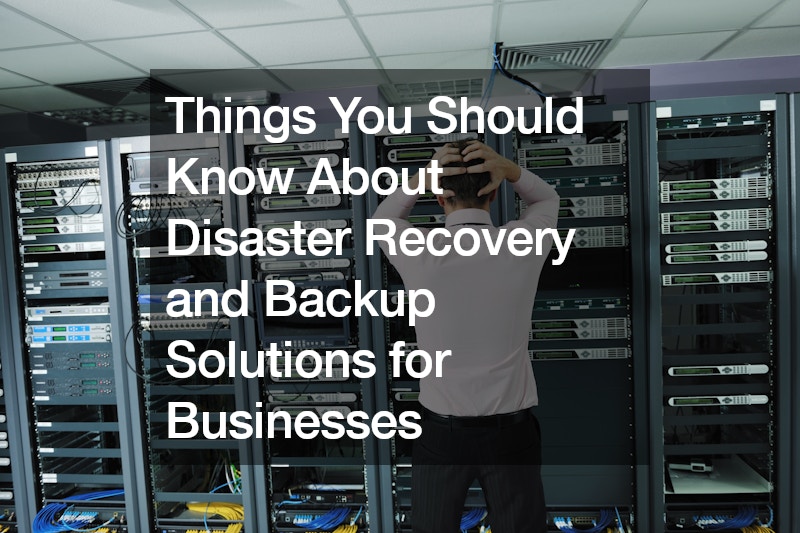
In today’s digital age, where data is at the heart of every business operation, ensuring its safety and accessibility is paramount. Disaster recovery (DR) and backup solutions play a crucial role in safeguarding businesses against data loss, downtime, and operational disruptions. This article explores essential aspects of DR and backup solutions that every business should know to protect their data effectively.
Understanding Disaster Recovery and Backup
Disaster recovery refers to the processes and procedures put in place to recover and restore critical business operations and data following a disaster. This could include natural disasters like floods or fires, cyber-attacks, hardware failures, or human errors.
On the other hand, backup solutions involve making copies of data to ensure its availability in case of data loss or corruption.
Importance of Safe DR Backup Solutions
Implementing a robust safe DR backup solution is vital for several reasons:
Data Protection: Safe DR backup solutions ensure that business-critical data is protected from various threats, including ransomware attacks and hardware failures. By maintaining up-to-date backups stored securely, businesses can recover data swiftly and minimize downtime.
Business Continuity: In the event of a disaster, business continuity hinges on the ability to recover data and resume operations promptly. Safe DR backup solutions enable businesses to maintain continuity and mitigate financial losses associated with prolonged downtime.
Regulatory Compliance: Many industries have strict regulatory requirements regarding data protection and retention. Safe DR backup solutions help businesses comply with these regulations by ensuring data integrity and availability.
Customer Trust and Reputation: Data breaches or prolonged downtime can damage a business’s reputation and erode customer trust. Implementing safe DR backup solutions demonstrates commitment to data security and reliability, enhancing customer confidence.
Types of Safe DR Backup Solutions
Cloud-Based Backup: Cloud storage offers scalable and secure backup solutions where data is stored offsite in geographically diverse data centers. This redundancy minimizes the risk of data loss due to localized disasters. Cloud-based solutions also provide flexibility in accessing data from any location with internet connectivity.
On-Premises Backup: Some businesses opt for on-premises backup solutions, where data is backed up to local servers or network-attached storage (NAS) devices. This provides direct control over data management and can offer faster recovery times for certain types of disasters. On-premises solutions are ideal for businesses with specific compliance or security requirements that mandate keeping data within their physical premises.
Hybrid Backup Solutions: Combining both cloud-based and on-premises backup solutions provides businesses with flexibility and redundancy. It allows for local backups for quick recovery and cloud backups for disaster recovery and offsite storage. Hybrid solutions are increasingly popular as they offer the benefits of both worlds, balancing security, performance, and accessibility.
Key Considerations When Implementing Safe DR Backup Solutions
Data Encryption: Ensure that all backed-up data is encrypted both in transit and at rest to protect against unauthorized access. Encryption adds an extra layer of security, especially for sensitive data such as customer information and financial records.
Regular Testing and Updates: Regularly test backup systems to verify data integrity and recovery procedures. Update backup protocols as business needs and technologies evolve to ensure they remain effective against emerging threats.
Scalability: Choose scalable solutions that can accommodate business growth and increasing data volumes without compromising performance or security. Scalability is essential to future-proof backup infrastructure and ensure it can support expanding data storage requirements over time.
Employee Training: Educate employees on the importance of data protection and the procedures for data backup and recovery. Human error is a common cause of data loss and can be mitigated through proper training and awareness programs. Ensure staff understand their roles in maintaining data security protocols.
Enhancing Operational Resilience
In addition to protecting data, businesses can enhance operational resilience through comprehensive disaster preparedness strategies:
Business Impact Analysis: Conducting a business impact analysis (BIA) helps identify critical business functions and prioritize recovery efforts. It ensures that resources are allocated effectively during a disaster recovery scenario.
Incident Response Plans: Develop and regularly update incident response plans (IRPs) that outline steps to be taken in case of a data breach, natural disaster, or other emergencies. IRPs should include communication protocols, roles and responsibilities, and steps for restoring operations.
Continuous Monitoring and Auditing: Implementing continuous monitoring and auditing of backup systems and data storage infrastructure helps detect vulnerabilities or anomalies promptly. Regular audits ensure compliance with data protection regulations and industry standards.
Conclusion
Ensuring the safety and accessibility of data through safe DR backup solutions is not merely a precaution but a proactive measure to secure business longevity and maintain competitive advantage in today’s interconnected digital landscape. By understanding the importance of disaster recovery and backup solutions and implementing robust strategies tailored to their needs, businesses can safeguard against potential threats and maintain operational resilience in the face of adversity.
By prioritizing data protection, continuity planning, and employee training, businesses can mitigate risks associated with data loss and downtime, thereby ensuring smoother operations and sustained growth. Investing in safe DR backup solutions is an investment in the future resilience and success of the business, safeguarding its most valuable asset: data.
.





